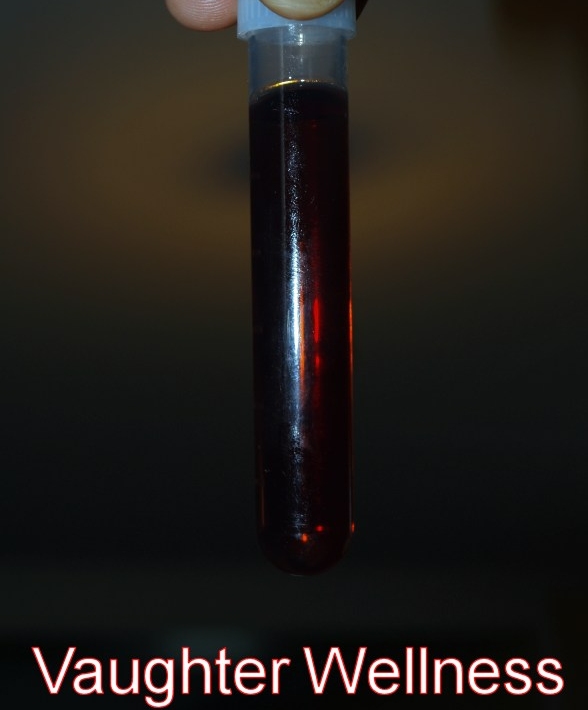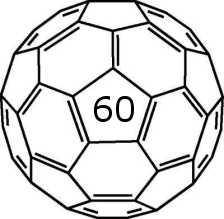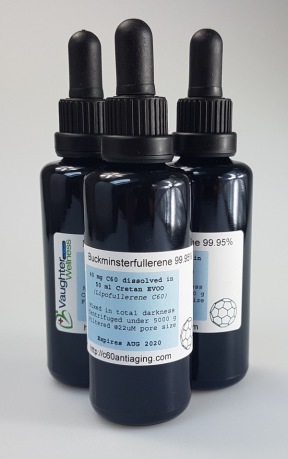The color of the Carbon-60 in olive oil
It is extremely hard to photograph the deep ruby red color of the Buckminsterfullerene C60 dissolved in olive oil, because the oil is much too dark to look red on a photograph.
We put a lamp behind an Erlenmeyer that had been mixing C60 for a week:

But it doesn't do the color justice, as we had to brighten the picture in order to see anything at all, as the photo became very dark because we put a lamp shining at the camera. The red colors found online are of C60 dissolved in water, it's much harder to show it in oil. The real color of the wall in the above picture is yellow, we just were not able to get the lighting conditions such that the color would show up. In reality, the oil is a very dark deep ruby red. The light behind it is a halogen lamp.
When you take a smaller, centrifuged and filtered amount, the color looks brown:

There are several C60-in-olive-oil pioneers on the Longecity forum who are mixing their own Buckyballs into oil and they had the same experience. As soon as you take a small quantity of the oil, it looks brown.
This is the same oil after one week of mixing (still with plenty of suspended C60 particles so it's more brown than red.)

The olive oil is yellow/greenish (extra virgin oil contains chlorophyll) so a purely red color is unattainable.
This is the color after two weeks of stirring and the centrifuge stage (we filled off a small centrifuge tube so that the color became visible in front of a lamp):









